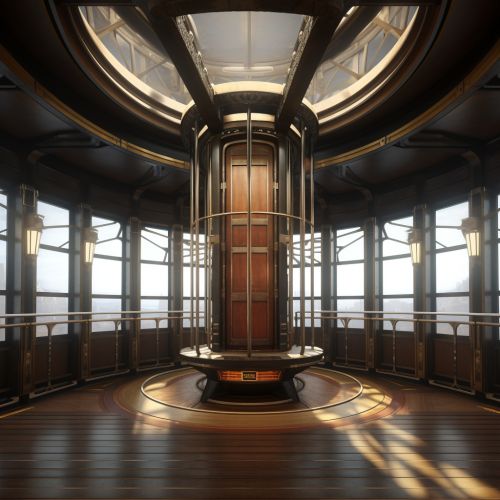Einstein's elevator
Introduction
The concept of Einstein's elevator is a thought experiment proposed by Albert Einstein that demonstrates the equivalence of gravitational and inertial mass, and shows how gravity and acceleration are interchangeable in his theory of General Relativity. This concept is a cornerstone of Einstein's theory and has profound implications for our understanding of the nature of gravity and the structure of the universe.


The Thought Experiment
Einstein's elevator thought experiment begins with an observer inside a closed elevator. The observer cannot see outside the elevator and has no way of knowing whether the elevator is at rest in a gravitational field or accelerating upwards in the absence of a gravitational field. This is because the effects of gravity and acceleration are indistinguishable from each other within the confines of the elevator.
The observer inside the elevator would feel a force pushing them downwards, whether this is due to gravity or acceleration. If the elevator is accelerating upwards, the observer would feel a force pushing them against the floor of the elevator, just as they would if the elevator were stationary in a gravitational field. This is the principle of equivalence, which states that the effects of gravity and acceleration are locally indistinguishable.
Principle of Equivalence
The principle of equivalence is one of the key ideas in Einstein's theory of General Relativity. It states that in a small enough region of spacetime, the effects of gravity are indistinguishable from those of acceleration. This principle is what allows Einstein to describe gravity as a curvature of spacetime caused by mass and energy, rather than as a force acting between masses.
In the context of Einstein's elevator, the principle of equivalence means that if the elevator were accelerating upwards at a rate equal to the acceleration due to gravity on Earth (9.8 m/s²), the observer inside the elevator would not be able to tell whether they were in an accelerating elevator in the absence of a gravitational field, or in a stationary elevator in a gravitational field.
Implications for General Relativity
The implications of Einstein's elevator and the principle of equivalence for General Relativity are profound. They allow Einstein to describe gravity not as a force, but as a curvature of spacetime. In Einstein's theory, mass and energy cause spacetime to curve, and objects moving in this curved spacetime follow geodesic paths, which are the generalization of straight lines in curved spacetime.
This means that an object in free fall is not being pulled downwards by a force of gravity, but is instead following a geodesic path in curved spacetime. This is why an observer in free fall does not feel any force acting on them, and why an observer in an accelerating elevator feels a force pushing them downwards.
Experimental Verification
The principle of equivalence and the predictions of General Relativity have been confirmed by numerous experiments and observations. For example, the bending of light by gravity, known as gravitational lensing, is a direct consequence of the curvature of spacetime predicted by General Relativity. This effect has been observed many times, most famously during the solar eclipse of 1919, which provided one of the first confirmations of Einstein's theory.
In addition, the Global Positioning System (GPS) provides a practical demonstration of the effects of General Relativity. The clocks on GPS satellites run slightly faster than clocks on the Earth's surface due to the weaker gravitational field in orbit. This effect, known as gravitational time dilation, is a prediction of General Relativity and must be accounted for in the operation of the GPS system.
Conclusion
Einstein's elevator is a powerful thought experiment that illustrates the principle of equivalence and the concept of gravity as a curvature of spacetime. It is a key element of Einstein's theory of General Relativity, which has fundamentally reshaped our understanding of the universe.
